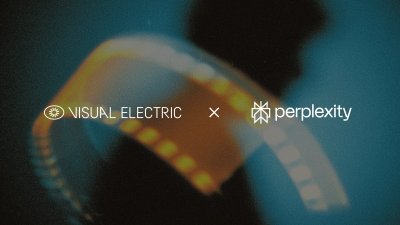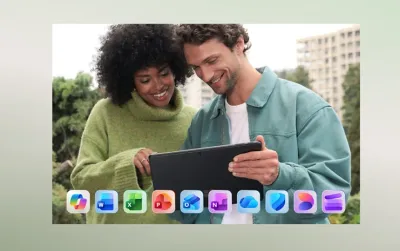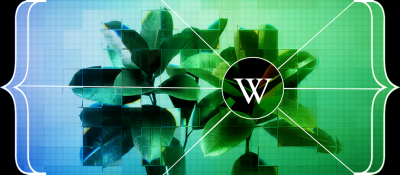Fabric
Your self-organizing digital workspace.
file management digital workspace productivity tool cloud storage data organisation technologyTool Information
| Primary Task | Search engine |
|---|---|
| Category | specialized-technologies |
| Sub Categories | research-and-knowledge-management project-management personal-assistants |
| Pricing | Free + from $5/mo |
| Country | United States |
Fabric is a robust tool designed to centralize and organise your digital environment. It functions as a comprehensive file explorer for the modern online age, capable of consolidating various storage mediums into a singular, cohesive workspace. Its core functionalities extend beyond a simple location to store files, as it possesses the capability to bring together drives, cloud storage services, notes, screenshots, and web links into one place, providing users with a more streamlined digital workflow. Fabric offers an automated feature that allows for self-organization, thus enhancing ease of navigation and retrieval of documents and data. This tool also features a memory system to ensure that even the smallest details or files are not forgotten, improving overall productivity and reducing the chances of crucial information loss. Ideal for digital creators, professionals, and organisations who manage a large volume of disparate digital resources, Fabric aims to provide a single 'home' for everything, boosting efficiency and control in a personal or team-based project setting.
| Pros |
|---|
|
| Cons |
|---|
|
Frequently Asked Questions
1. What is Fabric?
Fabric is a personal search engine and a collaborative internet library that aggregates all your files, notes, docs, bookmarks, and other internet content in one place. It's also a comprehensive file explorer for the online age, centralizing various storage mediums into a singular, cohesive workspace. The platform is designed to streamline content and enable collaboration, serving multiple purposes from document retrieval to project management and data organization.
2. How does Fabric work as a personal search engine?
Fabric operates as a personal search engine by allowing you to quickly search for a note, image, comment, or content across all your files and connected apps using a single search bar. It uses AI labeling and semantic search technology to locate desired items easily, making it unnecessary to spend time categorizing things in folders. The semantic search lets you describe what you're looking for in your own words.
3. What type of content can Fabric aggregate?
Fabric can aggregate various types of content, including files, notes, documents, bookmarks, screenshots, and web links. You can drag, paste, click to save anything into Fabric.
4. Is Fabric suitable for team collaboration?
Yes, Fabric is suitable for team collaboration. It lets users create shared spaces with powerful organizational tools allowing them to discuss, create, review ideas, and annotate notes on top of any website, image, or PDF as a team. You can also share multiple notes with one link.
5. What are the main features of Fabric's AI labeling and semantic search technology?
Fabric's AI labeling and semantic search technology allows the platform to understand and categorize content automatically. This makes it easy for you to find anything again easily, even if you don't recall the exact title or location, as you can describe what you're looking for in your own words. This technology also reduces the need to put things in folders.
6. Does Fabric require installation to join?
No, Fabric does not require installation to join. This contributes to its accessibility.
7. In what ways can Fabric streamline my digital workflow?
Fabric streamlines your digital workflow by bringing all your drives, cloud storage services, notes, screenshots, web links, and files into one place. The platform offers an automated self-organization feature that lets you navigate and retrieve documents easily. Additionally, it has a memory system to ensure that even minor details or files are not forgotten.
8. What is Fabric's memory system?
Fabric's memory system is designed to assure that no information is forgotten. It works by having all content, even the smallest details or files, automatically gathered and organized into one self-organizing home.
9. How does Fabric's automated self-organization feature enhance ease of navigation?
Fabric's automated self-organization feature enhances ease of navigation by automatically categorizing and labeling content. This means that folders and manual sorting are unnecessary, making it easy to retrieve the content.
10. How do I use Fabric's tool to discuss, create, and review ideas?
With Fabric, you can discuss, create, and review ideas by creating shared spaces that permit collaborative work. You can then add annotations and context to any website, image, or PDF, making information accessible to others in your team.
11. Can I annotate or append searchable and shareable notes on top of any website, image or PDF using Fabric?
Yes, you can. Fabric allows you to annotate, put context, and append searchable and shareable notes on top of any website, image or PDF, aiding collaboration.
12. How do I save content into Fabric?
You can save content into Fabric by dragging, pasting, or clicking. There are no limitations as to what kind of content you can save, allowing for diverse data management.
13. How can I use Fabric to unite and build knowledge in a team?
Fabric allows you to unite and build knowledge in a team by creating shared spaces and enabling discussions, creative process, and idea review. You can also append searchable and shareable notes on any website, image, or PDF, fostering collective knowledge.
14. Who are the target users of Fabric?
The target users of Fabric are busy makers and thinkers. This encompasses digital creators, professionals, and organizations who manage a large volume of disparate digital resources and require a comprehensive solution for centralizing and organizing their digital environments.
15. Why is Fabric referred to as an 'internet OS'?
Fabric is referred to as an 'internet OS' because, much like an operating system on a computer, it creates a unified, streamlined space where you can work, organize, and search for your content. It brings together various functionalities including document retrieval, project management, automation, and data organization.
16. How does Fabric serve as a file management tool for the modern online age?
Fabric serves as a file management tool for the modern online age by consolidating various storage mediums (drives, cloud services) into a single platform. It provides a location for you to store and organize all your files, notes, screenshots, links, and even web content. With its self-organizing and automatic categorizing capabilities, it makes file retrieval simple and easy.
17. Can I connect Fabric to my other apps?
Yes, you can connect Fabric to your other apps. It's designed to search for content across all your files and connected apps, unifying your digital workspace.
18. Can Fabric help reduce the chances of crucial information loss?
Yes, Fabric can help reduce the chances of crucial information loss. It features a memory system that ensures all content is gathered and organized into one self-organizing space, meaning you'll never forget anything again.
19. What types of files can Fabric handle?
Fabric can handle all types of files. Be it notes, documents, screenshots, links, etc., Fabric can organize and manage them all. This ensures a comprehensive and uncluttered digital workspace.
20. Why does Fabric pride itself in being user-friendly and accessible?
Fabric prides itself in being user-friendly and accessible because it has a straightforward interface that allows quick search and organization of content. There is no need to install anything to join the platform, and sharing of notes and content with others is made simple with one link.
Comments
Similar Tools
Related News

Perplexity, the ambitious AI search startup, is making a significant strategic move by opening up its Comet AI browser to every...
@devadigax | Oct 02, 2025

In a significant move underscoring the rapidly evolving landscape of artificial intelligence, Perplexity AI, the innovative ans...
@devadigax | Oct 02, 2025

Microsoft is making a bold strategic move in the rapidly evolving landscape of artificial intelligence, effectively repositioni...
@devadigax | Oct 01, 2025

The Wikimedia Foundation, the non-profit organization behind Wikipedia and its sister projects, is embarking on an ambitious in...
@devadigax | Sep 30, 2025

OpenAI, the trailblazing artificial intelligence research company, is reportedly venturing into the competitive world of online...
@devadigax | Sep 29, 2025

OpenAI, the pioneering force behind ChatGPT and DALL-E, is reportedly on the cusp of a revolutionary leap into the social media...
@devadigax | Sep 29, 2025
 AI Tool Buzz
AI Tool Buzz
 Perplexity
Perplexity